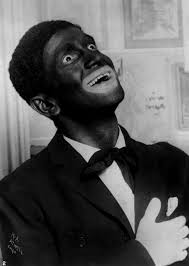The Jazz Singer (1927 movie) facts for kids
The Jazz Singer is a famous American movie from 1927. It was released in movie theaters by Warner Bros.. This film stars the popular singer and actor Al Jolson, along with May MacAvoy and Warner Oland. While many people think it was the very first "talking picture," it actually wasn't. An earlier movie called Dream Street (1921) had a talking part at the beginning, introduced by D. W. Griffith. However, The Jazz Singer was the first full-length movie to include spoken dialogue and singing as part of the story, making it a huge step forward for cinema.
Contents
What Made The Jazz Singer Special?
The Jazz Singer is known for changing movies forever. Before this film, most movies were "silent films." This meant actors showed emotions and told stories through their actions and facial expressions, and words appeared on screen as text cards. Music was often played live in the theater to set the mood.
The Arrival of Sound
This movie was different because it used a new technology called Vitaphone. Vitaphone allowed sounds, like music and spoken words, to be played at the same time as the movie. This was done by recording the sound on large phonograph records that were synced with the film projector.
A Mix of Old and New
Interestingly, The Jazz Singer wasn't entirely a "talkie." Most of the movie was still silent, with text cards for dialogue. But it had several scenes where Al Jolson sang songs and spoke a few lines. These moments were very exciting for audiences who had never heard actors speak on screen before.
Who Was Al Jolson?
Al Jolson was a very famous entertainer in the early 20th century. He was known for his powerful singing voice and energetic performances. In The Jazz Singer, he plays a character named Jakie Rabinowitz, who dreams of becoming a jazz singer.
The Story of Jakie
Jakie comes from a strict Jewish family where his father is a cantor (a singer who leads prayers in a synagogue). His father wants Jakie to follow in his footsteps, but Jakie loves jazz music and wants to perform in clubs. The movie shows his journey as he tries to achieve his dreams while also respecting his family's traditions.
A Difficult Choice
The story reaches a dramatic point when Jakie has to choose between performing on opening night of his show and singing for his dying father on a very important religious holiday. This conflict between his passion for music and his family duties is a central part of the film.
Why Was It So Important?
The Jazz Singer was a massive success and showed Hollywood that "talkies" were the future. It convinced movie studios to start making more films with sound. This led to a rapid change in how movies were made and watched.
The End of an Era
The success of The Jazz Singer quickly led to the decline of silent films. Many silent film stars struggled to adapt to talking roles, as they needed different acting skills and good speaking voices. New stars who could act and speak well became popular.
Impact on Movie Production
Studios had to invest a lot of money in new equipment for recording sound and building soundproof sets. Movie theaters also had to upgrade their equipment to play sound films. This transformation was a huge and expensive undertaking for the entire film industry.
Legacy of the Film
Even though The Jazz Singer is a very old movie, it remains historically important. It is recognized for its role in bringing sound to the big screen and changing the course of movie history.
A Landmark in Cinema
In 1996, The Jazz Singer was chosen to be preserved in the United States National Film Registry. This means the Library of Congress considers it a culturally, historically, or aesthetically important film. It's a reminder of a major turning point in the world of movies.
See also
 In Spanish: The Jazz Singer (película de 1927) para niños
In Spanish: The Jazz Singer (película de 1927) para niños



